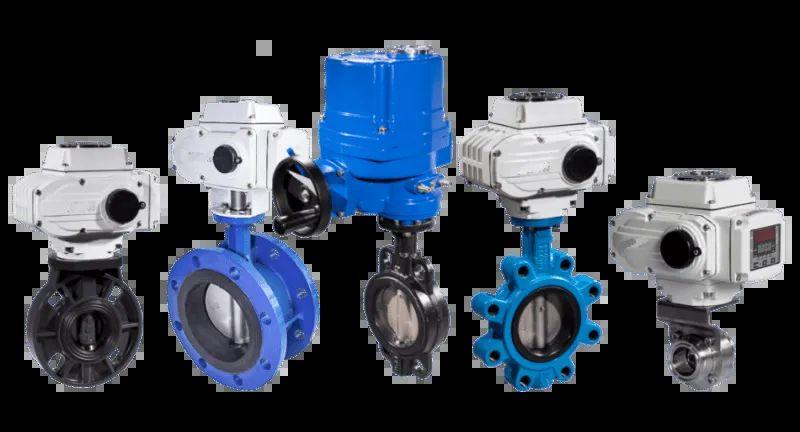Notifications

6 minutes, 4 seconds
-1 View 0 Comments 0 Likes 0 Reviews

As a leading control valve manufacturer in China, we deliver premium valves and control actuators expertly designed to meet a wide range of industrial requirements.
Electric butterfly valves are essential components in modern industrial systems, widely used to regulate fluid flow in sectors such as water treatment, oil and gas, power generation, chemical processing, HVAC, and more. As automation demands intensify, the performance of these valves depends heavily not only on the valve design but also on the electric actuator that powers their operation.
Selecting the right electric actuator involves more than matching power ratings; it requires a thorough understanding of torque needs, valve types, fluid characteristics, environmental conditions, and operational patterns. An improperly sized or unsuitable actuator can cause incomplete valve movement, frequent failures, increased energy consumption, and even system hazards.
This comprehensive guide is designed to help engineers, maintenance teams, and procurement professionals select the ideal electric actuator for butterfly valves. We’ll explore key principles, critical factors, and practical steps to ensure reliable and efficient valve control.
The actuator functions as the mechanical “muscle” of the valve, converting electrical power into motion to open, close, or modulate the butterfly disc. An undersized actuator may lack the torque to overcome system resistance, leading to valve sticking or leakage. Conversely, an oversized actuator can cause unnecessary costs, energy waste, and increased wear on equipment.
Correct actuator sizing ensures:
Reliable and safe valve operation
Extended lifespan of valve and actuator
Lower maintenance frequency and expenses
Improved energy efficiency
Compliance with specific application requirements such as explosion-proof environments or high cycle rates
Torque is the fundamental factor for actuator selection. It represents the force needed to turn the butterfly disc from closed to open, overcoming seat friction, fluid pressure, and potential deposits.
Torque depends on valve size, type, sealing design, and pipeline pressure.
Manufacturer tolerances and valve condition (age, corrosion) also affect torque.
Rule of thumb: Choose an actuator with a rated torque 1.2 to 1.5 times the maximum valve torque to maintain a safety margin.
Larger valve diameters exponentially increase torque requirements.
Concentric (midline) valves generally need more torque due to constant disc-seat contact.
Double-eccentric and triple-eccentric designs reduce friction and torque demand by 30%-50%.
Soft-seated valves typically require less torque than metal-seated types, especially under high pressure or temperature.
Always consult manufacturer torque data for accuracy.
Viscosity: Thicker fluids like crude oil or slurries increase resistance; add 15%-25% torque margin.
Temperature: High temperatures (>80°C) require heat-resistant actuators and seals.
Corrosive Media: Use actuators with protective coatings or special materials.
Pressure Fluctuations: Frequent changes can increase dynamic torque; factor this into calculations.
Explosion-proof certification: Required in hazardous areas (oil, chemical plants, mining). Look for certifications such as Ex d IIC T6.
Ingress Protection (IP): Outdoor or washdown applications may need IP67/IP68 ratings.
Ambient Conditions: Some actuators feature heaters for cold climates or ruggedized designs for harsh environments.
Step 1: Gather Valve Data
Collect details on valve type, size (DN), pressure class, sealing material, fluid medium, and pipeline conditions.
Step 2: Calculate Operating Torque
Use manufacturer torque curves or measure peak torque during valve operation, adjusting for factors like viscosity and deposits.
Step 3: Choose Actuator Specifications
Multiply torque by a safety factor (1.2–1.5). Confirm electrical compatibility (e.g., AC 220V/380V or DC 24V) and control type (On/Off or modulating).
Step 4: Verify Special Conditions
Ensure compliance with explosion-proof standards, high cycle durability, environmental protections, and availability of manual overrides.
Partner with reputable actuator suppliers who provide technical support and training.
Install safeguards such as overload protection, torque limiters, and position feedback sensors.
Schedule regular maintenance to inspect seals, gears, and lubricate moving parts.
Consider smart actuators offering remote monitoring, data logging, and predictive maintenance.
Selecting the right electric actuator for butterfly valves is critical for achieving safe, efficient, and dependable flow control in automated systems. By systematically understanding torque requirements, process conditions, and environmental factors — and by applying appropriate safety margins — you can optimize valve performance, reduce downtime, and minimize operating costs.
Investing effort into proper actuator sizing not only protects your equipment but also enhances long-term system reliability and efficiency.Know more about Google SEO Directory
Wheel Excavator Manufacturer China Excavator Manufacturer China Wheeled Excavators

